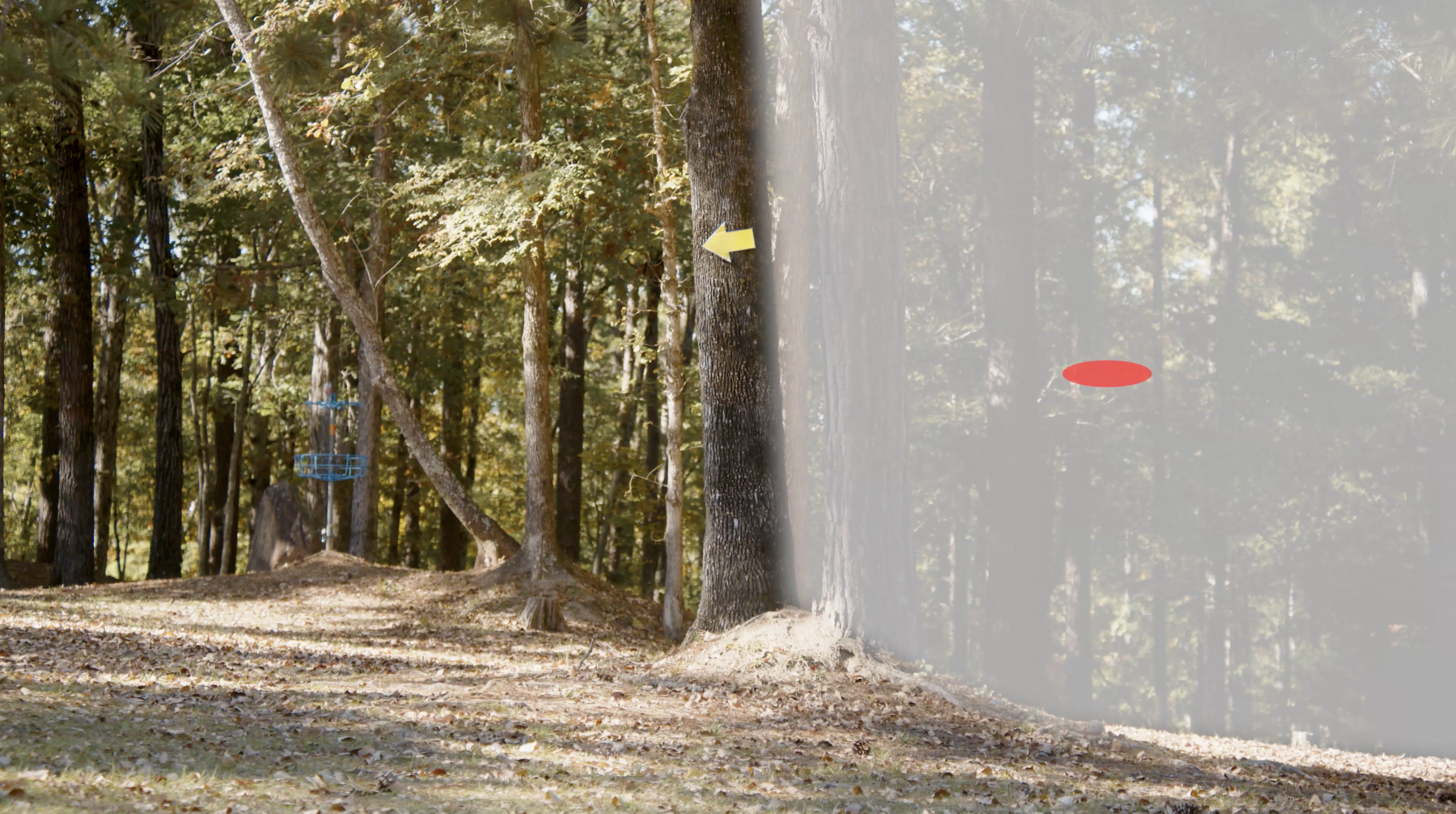Disc Golf Rules School - Episode 7: Mandatory Routes
Disc Golf Rules School - Episode 7: Mandatory Routes

In the last episode of PDGA Rule School, we examined Out-of-Bounds areas, which are areas on the course designated by the Tournament Director as “off limits”.
In this episode, we’re going to look at another tool that TDs can use to add challenge and maintain safety and flow on the course: mandatory routes.
The rules governing mandatory routes (804.01) were revised in 2022, so pay close attention to make sure you are up to date.
Defining the Mandatory Route
A mandatory route restricts the path that the disc can take to the target. It is a vertical plane whose boundaries are clearly marked by one or more mandatory objects like trees or posts, as well as other markers like painted lines.
Note: Previous editions of the rulebook included a clause to define the direction of the restricted space if the TD had not explicitly marked it. Under the current rules, however, the direction the restricted space extends from a mandatory object must be defined and marked by the TD using a painted line, string, or other marker.
Double and Triple Mandatories
Multiple mandatory objects may require a player to throw between two objects (double mandatory), or even through an archway or gate-shaped set of objects (triple mandatory). Instructions on how to play each mandatory should be included in the caddie book or explained in the players’ meeting.

Players play through the famous triple-mandatory hole 7 at the 2021 United States Disc Golf Championship. Photo: PDGA Media
When Has a Throw Missed the Mandatory?
A throw has missed the mandatory if part of the disc clearly enters the restricted space.
Note: This is an update from a previous version of the rule in which the disc had to clearly and completely enter the restricted space in order to miss the mandatory. Under the current version, only a part of the disc has to enter the restricted space.
Think of the mandatory as a vertical sheet of paper on the “wrong” side of the mandatory object. If your disc punches a hole in that sheet of paper, you’ve missed the mandatory.

Where the disc comes to rest—in-bounds, out-of-bounds, on the “correct side” of the mando—doesn’t matter. If any part of the disc has crossed into the restricted space, then it has missed the mandatory.
It also doesn’t matter where your disc came from when it crosses into the restricted space. If you cross into the restricted space going forward, going backward, cross it and then bounce back out, you have missed the mandatory.
A player who misses a mandatory receives one penalty throw. The lie for the next throw is the drop zone for that mandatory, if provided, or, if no drop zone has been designated, the previous lie.
Extra Credit: Line of Play
As you’re playing a hole with a mandatory, the line of play is a straight line to the target. Note that this is different from previous years’ rules. As of 2022, the line of play is ALWAYS a straight line to the target, no matter where your lie is located or if there’s a mandatory in the way.
See Episode 3: Marking Your Lie for more info on line of play.
Class Dismissed
For more information visit the Official Rules of Disc Golf and be sure to check back each Thursday for a new installment of PDGA Rules School.
See you out on the course!






Comments
I just have a question about
I just have a question about how you can completely clear the Mando but at the same time it have an unfavorable cut roll that barely touches the restricted space which is clearly behind the line of play and once the mini marker is put down its 6in away from the restricted. How is that a penalty? This isn't Nascar you can't pass the starting line turn around and be considered to be driving the wrong way. A disc that clears the mandatory should be clear. All you've done is create a huge scoring gap between players, and you've effectively punished people that clear the Mando.
The adjustment of the
The adjustment of the mandatory to make it a no-fly zone from either direction is purposeless. Obviously, being penalized for penetrating the Restricted Space from the front makes sense. Being penalized for crossing the line of restriction from the backside after having passed the mando legally is counterintuitive. Likewise, having a regulation exactly opposite of the OB regulation regarding the touching of "fair" territory is also counterintuitive. These adjustments do nothing to improve or speed up the flow of the game. In fact, my prediction is that they will have the opposite effect. Not to mention the probable requirement of extra spotters/judges to help settle these calls.
Confirmed application of the
Confirmed application of the new Mandatories ruling according to the PDGA Rules Committee. On any successive throw, a disc can still miss the Mando by having any part of the disc enter the restricted space. For example: A disc passed on the correct side of the mandatory without touching any part of the restricted space and came to rest just outside circle 2. The next throw the disc hit the cage, rebounded and rolled back toward the Mando and passed through the restricted space. That throw is now considered to have missed the Mando.
If that happens your options are playing your next throw with a 1 throw penalty from the defined drop zone, from the previous lie if there is no defined drop zone, or abandoning the throw and playing from your previous lie even if there is a defined drop zone.
I was hoping someone could
I was hoping someone could explain the reasoning for this adjustment to the Mandatory rules. They appear to be, as I contend, counterintuitive and lacking logic in terms of flow of play and continuity with related rules such as OB.